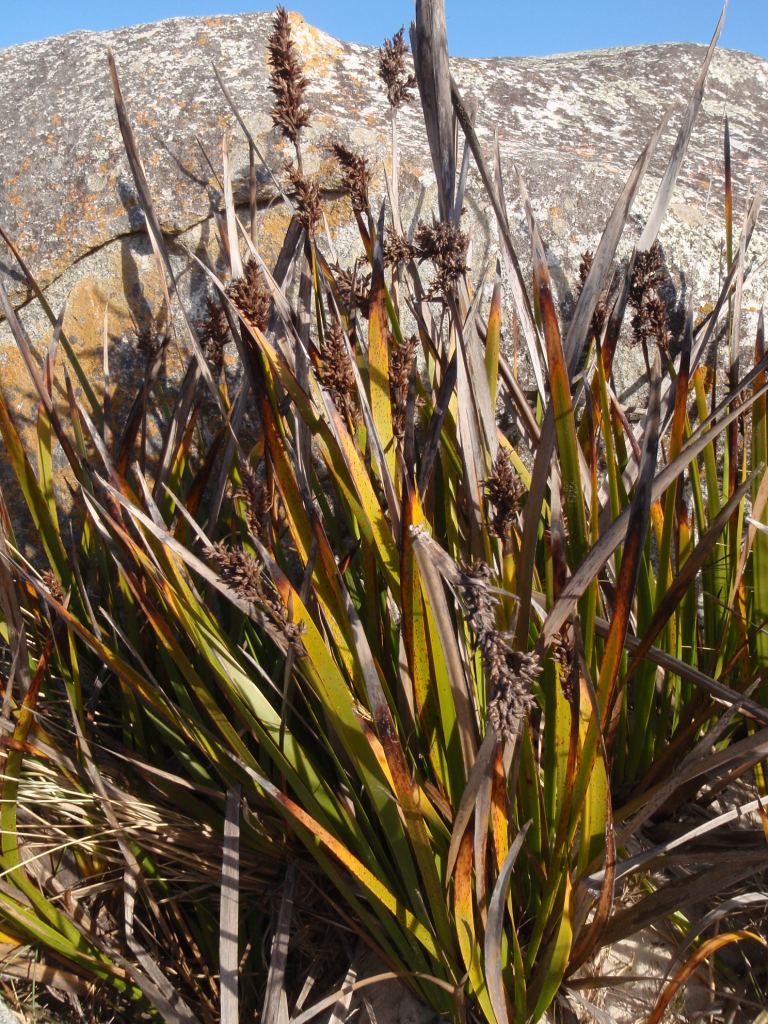Scientific Name: Lepidosperma gladiatum
Common Name: coast swordsedge
Family Classification (Clade): Monocots
Family: Cyperaceae
Form Description: Robust sedge with flattened stems and sword-like leaves, 2cm wide, 1m or more long and all in one plane.
Flowers: Compact heads of brown flowers at the top of the stem, 15cm long by 6cm wide. Spikelets in dense clusters, change from pale red to black over time.
Fruit: Nut – small, pale to dark brown, 2-4mm long; contained in dry seed heads.
Municipality
Plant Communities
Habitat Notes
Coastal sands around the State.
Frost Tolerance
Moderate
General Notes
Resistant to Phytophthora cinnamomi. Its leaves are used for weaving (contemporary), contributing interesting colour. Flower heads are also used in dried flower arrangements.
Propagation Calendar
-
Flowering Month
Jan Feb Mar Apr May Jun Jul Aug Sep Oct Nov Dec -
Seed Collecting Month
Jan Feb Mar Apr May Jun Jul Aug Sep Oct Nov Dec -
Sowing Month
Jan Feb Mar Apr May Jun Jul Aug Sep Oct Nov Dec -
Cutting Month
Jan Feb Mar Apr May Jun Jul Aug Sep Oct Nov Dec
Propagation Method
Seed Information
Seed Collection
Very difficult to grow from seed. Some species retain seed on the plant for several years. Cut the whole seed head with secateurs and allow to dry. Beat against a hard surface to extract, being careful of sharp foliage.
Seed Treatment Notes
Seed is slow to germinate and may have low viability. Seed is reputed to germinate very slowly if sown in dark and moist conditions. A combined heat-smoke treatment may be worth trying, possibly with older seed.
Cutting & Division Information
Can be propagated by division over the winter months, but plants are slow to re-establish.
